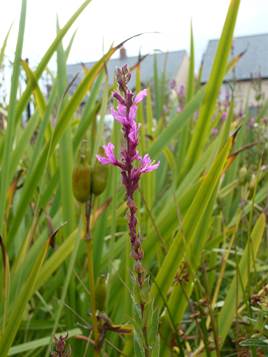- Delivering SuDS
- Using SuDS
- Background
- SuDS principles
- Benefits of SuDS
- Benefits of SuDS
- Why developers should choose SuDS
- Flood risk management
- Water quality management
- Biodiversity & ecology
- Amenity
- Air quality
- Building temperature
- Carbon reduction and sequestration
- Crime
- Economic growth
- Enabling development
- Flexible infrastructure/climate change adaptation
- Education
- Groundwater recharge
- Health and well being
- Pumping wastewater
- Rainwater harvesting
- Recreation
- Tourism
- Traffic calming
- Treating wastewater
- SuDS components
- SuDS components overview
- Source control
- Swales & conveyance channels
- Filtration
- Infiltration
- Retention & detention
- Wetlands
- Inlets, outlets and control structures
- SuDS performance & monitoring
- Delivery
- The costs & benefits of SuDS
- Adoption & maintenance of SuDS
- Legislation & regulation
- Design guidance
- Retrofitting SuDS
- Drainage exceedance
- Home
- Delivering SuDS
- Using SuDS
- Benefits of SuDS
- Crime
Crime
 Some studies have found a meaningful relationship between increased greenery and reduced crime. For example, Kuo and Sullivan (2001) found that levels of reported property and violent crime tend to be higher amongst people living in barren buildings compared to those in greener buildings. Compared to buildings with low levels of vegetation, those with medium levels had 42% fewer total crimes, 40% fewer property crimes, and 44% fewer violent crimes. The comparison between low and high levels of vegetation was even more striking: buildings with high levels of vegetation had 52% fewer total crimes, 48% fewer property crimes, and 56% fewer violent crimes than buildings with low levels of vegetation.
Some studies have found a meaningful relationship between increased greenery and reduced crime. For example, Kuo and Sullivan (2001) found that levels of reported property and violent crime tend to be higher amongst people living in barren buildings compared to those in greener buildings. Compared to buildings with low levels of vegetation, those with medium levels had 42% fewer total crimes, 40% fewer property crimes, and 44% fewer violent crimes. The comparison between low and high levels of vegetation was even more striking: buildings with high levels of vegetation had 52% fewer total crimes, 48% fewer property crimes, and 56% fewer violent crimes than buildings with low levels of vegetation.
However, the location of this study (Chicago) and the socio-demographic characteristics of the population are very different to the UK. In addition, there is as yet no comprehensive and conclusive evidence that clearly links SuDS and crime levels. Indeed, poorly maintained green spaces can be the focus of anti-social behaviour (Dunse, White et al, 2007, cited in Natural England, 2014) such as littering, loitering with intent, noise pollution and vandalism. Nevertheless, a potential impact pathway is shown in the diagram below.
Read more on:
- Benefits of SuDS
- Flood risk management
- Water quality management
- Biodiversity & ecology
- Amenity
- Air quality
- Building temperature
- Carbon reduction & sequestration
- Economic growth
- Education
- Enabling development
- Flexible infrastructure/climate change adaptation
- Groundwater recharge
- Health & wellbeing
- Pumping wastewater
- Rainwater harvesting
- Recreation
- Tourism
- Traffic calming
- Treating wastewater
- SuDS performance and monitoring



